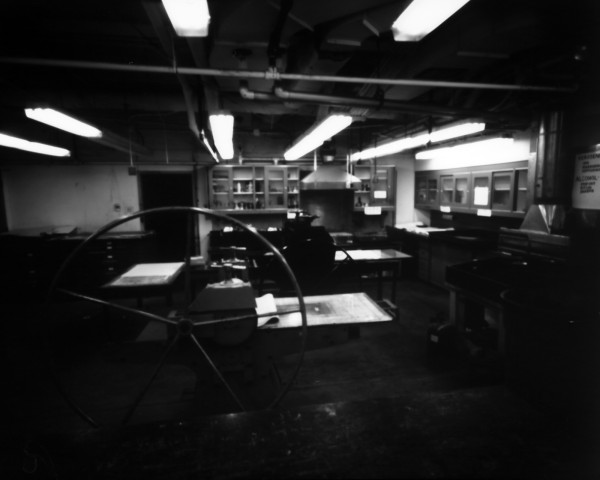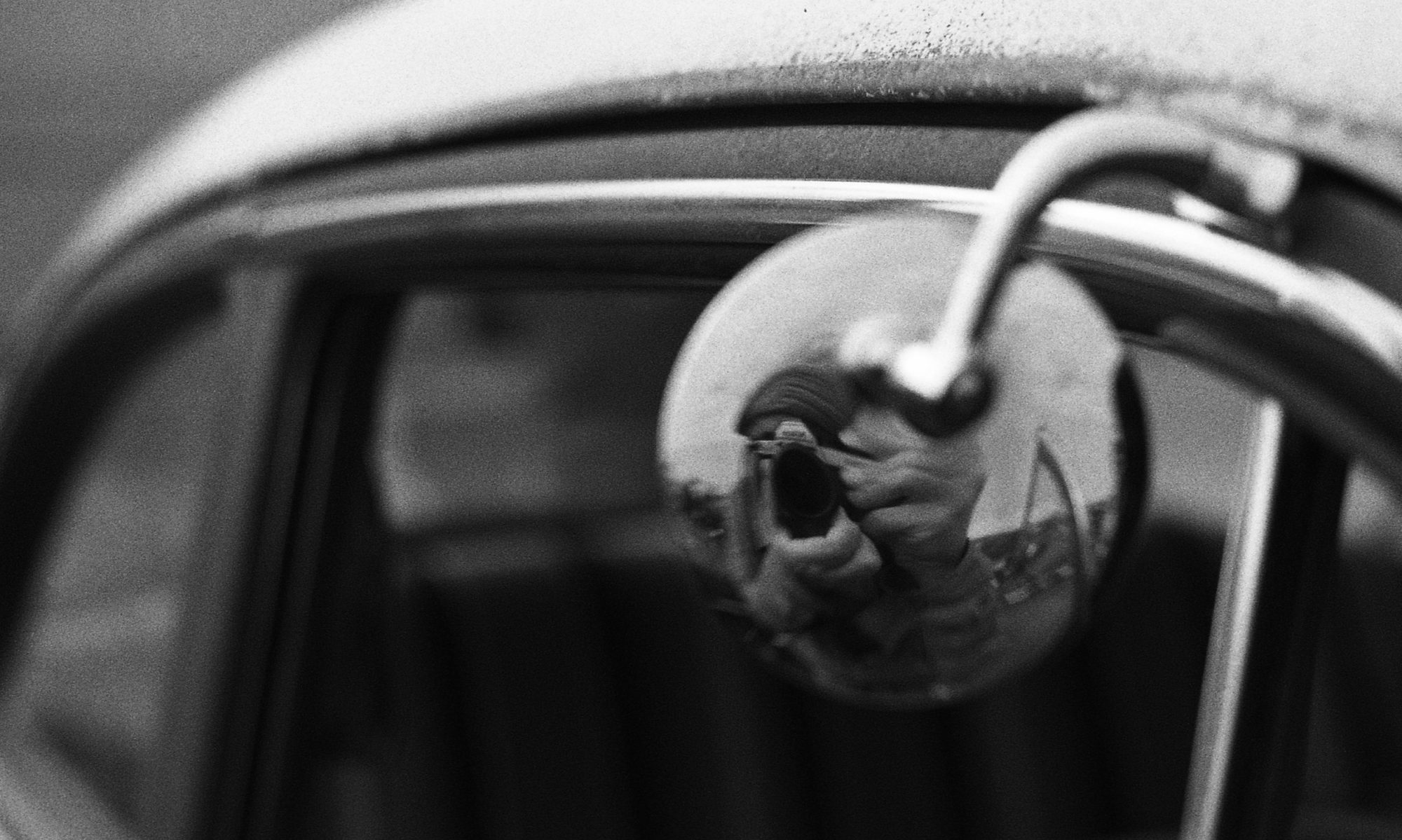
I’ve been shooting paper negatives for the last few weeks and having a lot of fun doing it.
A paper negative is Ilford photographic paper as the camera’s film. That’s right, the same stuff used to make enlargements from Black & White film negatives. I’m currently using Ilford MGIV Multigrade IV RC De Luxe paper.
@JonWilkening @ILFORDPhoto My shots came out as paper negatives. I reversed them in Photoshop. This is what I got http://t.co/vIZqH4HzYi
— Mr. Holga (@MrHolga) March 23, 2015
The photo paper creates a negative photo of whatever is projected on it. So, everything I shoot and develop comes out as a paper negative. The image is inverted from black to white and left to right. Both of these issues can be corrected in Photoshop once the negative is scanned.
I shoot paper negatives with my Speed Graphic and pinhole cameras. Both cameras use 4×5 inch film holders. Each holder stores two 4×5 paper negatives until they are ready for exposure.
#papernegatives #papernegative #paperfilm @ILFORDPhoto #SpeedGraphic #pinhole pic.twitter.com/JVpA44ZE5D
— Mr. Holga (@MrHolga) March 30, 2015
Why Shoot Paper Negatives
I’m shooting paper negatives for several reasons including time, cost, convenience, experience and entertainment.
I’m saving time and money with paper negatives by omitting the film negative: film cost, development cost and development time. Each 4×5 film negative is about $1 per shot, which does not include developing chemicals. Development time for six film negatives takes about 30 plus minutes to load, process and dry.
In contrast, Ilford paper is about $1 per 8×10 inch sheet, which gives me four 4×5 paper negatives for a quarter a piece, and each negative can be developed in 3 minutes. That’s ten or more paper negatives in the same time as six film negatives.
Convenience is my reason for using photographic paper in my 4×5 cameras. Photo paper can be handled under a red safe light, allowing for ease of cutting and loading the film holders. Loading film holders for the first time in the dark is a nerve racking enterprise.
The benefit is experience. The ability to quickly load, shoot and process paper negatives gives me more time to use my large format photo equipment. My Speed Graphic sat idle for many years until I started shooting on photo paper. My messenger bag is currently filled with either my Speed Graphic or pinhole cameras and all the film holders it can carry. A notebook for shot records is the only thing missing.
I’m also practicing my pinhole on paper technique for the Dallas Photo Walk Worldwide Pinhole at The Museum of the American Railroad on Saturday, April 25, 2015. I’m hoping to capture the old iron with a well exposed paper negative.
I think this is pretty sharp coming from an @IlfordPhoto paper negative. House Portrait https://t.co/K5xqXfF2L8
— Mr. Holga (@MrHolga) March 23, 2015
Lastly, I’m doing this for the entertainment. I have 35 plus 4×5 paper negatives on my desk. I really enjoy picking up the stack and thumbing through the photos. It’s wonderful to hold photographs in your hand. We are missing this in the digital age: holding a memory in your hands.
Shooting with Paper
Shooting with Ilford photographic paper is slow. The ISO of the paper is estimated to be ISO 3-4. Compared to my normal film negative of ISO 100, this is a near stand still.
Using my f-208 pinhole camera on a bright, sunny day takes about 20 seconds for one shot. Cloudy days will take minutes. Be prepared to slow down your photographic process, if you intend to create paper negatives.
It's overcast and my pinhole shot on #ilfordpaper will take over ten minutes to capture. #Ilford… https://t.co/gWyq1CtwWL
— Mr. Holga (@MrHolga) April 1, 2015
Negative to Positive
There are a couple of things I am still looking into. The first being positive paper. Ilford was distributing Harman Direct Positive Paper until Harman went bankrupt. With all the reasons I have given above, I hope Ilford sees a great need to redevelop this product as soon as possible. Analog photography would go through the roof using large format and pinhole cameras again with positive paper.
Since I can’t wait for innovation, I’ve read about a process of creating a paper positive from a paper negative. It involves putting the paper negative over a new sheet of photo paper and them exposing both images with light. The details state that both sheets should be emulsion side together. Exposure time is about 20 seconds. I will be trying this really soon. Until then, I’ll just scan and invert. Cheers.
